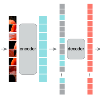Notifications are one of the most prevailing mechanisms on smartphones and personal computers to convey timely and important information. Despite these benefits, smartphone notifications demand individuals' attention and can cause stress and frustration when delivered at inopportune timings. This paper investigates the effect of individuals' smartphone usage behavior and mood on notification response time. We conduct an in-the-wild study with more than 18 participants for five weeks. Extensive experiment results show that the proposed regression model is able to accurately predict the response time of smartphone notifications using current user's mood and physiological signals. We explored the effect of different features for each participant to choose the most important user-oriented features in order to to achieve a meaningful and personalised notification response prediction. On average, our regression model achieved over all participants an MAE of 0.7764 ms and RMSE of 1.0527 ms. We also investigate how physiological signals (collected from E4 wristbands) are used as an indicator for mood and discuss the individual differences in application usage and categories of smartphone applications on the response time of notifications. Our research sheds light on the future intelligent notification management system.
翻译:尽管有了这些好处,但智能电话通知要求个人注意,在发送通知时可能会造成压力和挫折。本文调查了个人智能电话使用行为和情绪对通知反应时间的影响。我们进行了为期5周、有18名以上参与者参加的一项全方位研究。广泛的实验结果表明,拟议的回归模型能够利用当前用户的情绪和生理信号准确预测智能电话通知的反应时间。我们探讨了不同特征的影响,让每个参与者选择最重要的面向用户的特征,以便实现有意义和个性化的通知反应预测。平均而言,我们对所有参与者的回归模型达到了0.7764米MAE和1.0527米RMSE。我们还调查了生理信号(从E4手腕带中收集)如何用作情绪信号的指标,并讨论了在通知反应时间应用智能手机应用方面的个别差异和类别。我们的研究为未来的智能通知管理系统提供了灯光。
相关内容
- Today (iOS and OS X): widgets for the Today view of Notification Center
- Share (iOS and OS X): post content to web services or share content with others
- Actions (iOS and OS X): app extensions to view or manipulate inside another app
- Photo Editing (iOS): edit a photo or video in Apple's Photos app with extensions from a third-party apps
- Finder Sync (OS X): remote file storage in the Finder with support for Finder content annotation
- Storage Provider (iOS): an interface between files inside an app and other apps on a user's device
- Custom Keyboard (iOS): system-wide alternative keyboards
Source: iOS 8 Extensions: Apple’s Plan for a Powerful App Ecosystem




